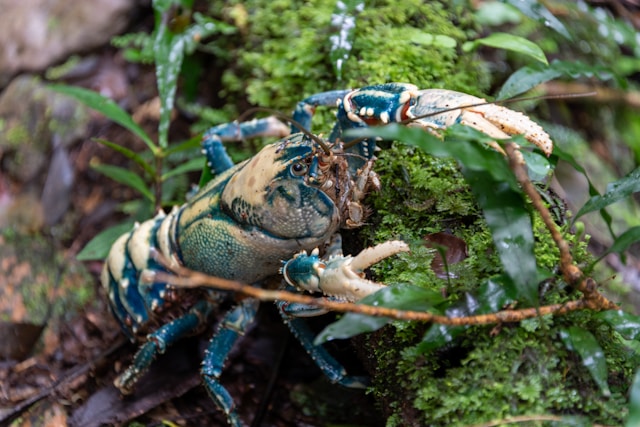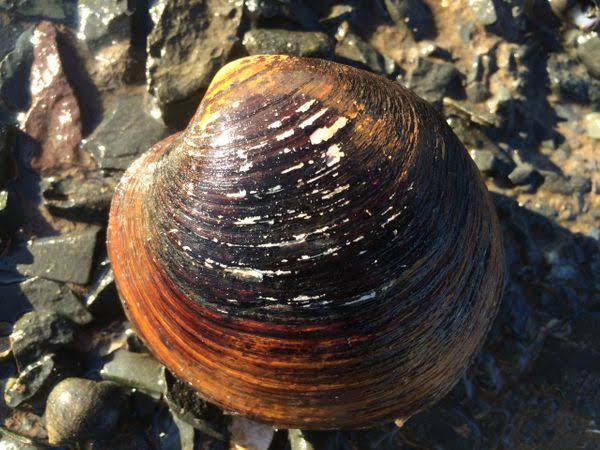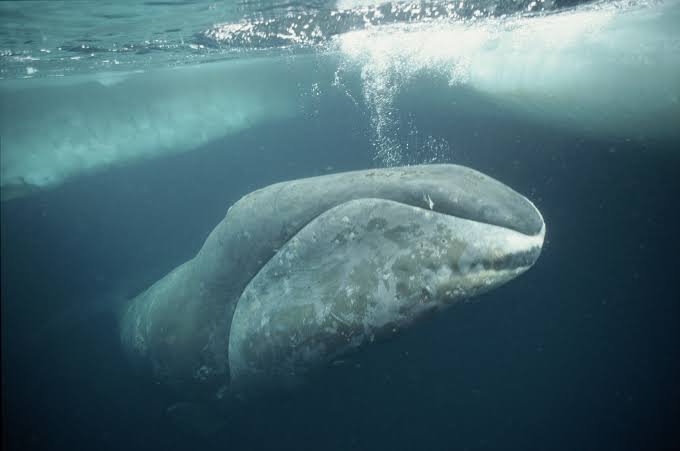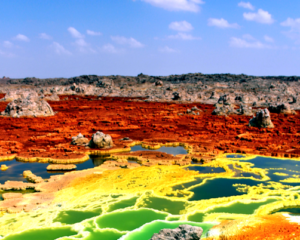In the vast tapestry of the animal kingdom, there exist extraordinary creatures that seem to possess the secret of eternal life. From microscopic marvels to majestic beings, the world is home to a fascinating array of immortal animals that challenge our understanding of mortality. Join us on a remarkable journey as we unveil the top 9 immortal animals that continue to captivate and astonish scientists and nature enthusiasts alike.
 Pin
Pin Image by wirestock from Freepik
Table of Contents
1. Turritopsis dohrnii (The Immortal Jellyfish)
 Pin
Pin Image by Ocean Conservancy
Turritopsis dohrnii, also known as The Immortal Jellyfish, holds the fascinating power to turn back time in its own biological clock. Picture this incredible creature defying the norms of aging by reversing its life cycle, almost like hitting a cosmic rewind button. Just when you think its time is up, Turritopsis dohrnii says, “Not today!” and transforms into its youthful self, ready to relive its life all over again. This mesmerizing ability to rejuvenate has earned this jellyfish the title of being biologically immortal, a timeless marvel in the vast ocean. It’s like a real-life superhero of the sea, showing us that maybe, just maybe, immortality isn’t reserved for legends and myths after all.
 Pin
Pin 2. Lobsters
 Pin
Pin Photo by Steven Joel on Unsplash
Ah, lobsters – the elusive beings of the sea that seem to defy the hands of time. These remarkable creatures are rumored to possess a secret to everlasting youth: negligible senescence. Aging is but a mere myth to lobsters, where the words “wrinkles” and “gray hairs” hold no power over their eternal vitality. While mortality still lingers in their realm through diseases and other perils, the essence of age seems to dance around them, never truly taking hold. In a mesmerizing display of biological enigma, lobsters whisper tales of indefinite lifespans and bodies that challenge the very essence of time.
3. Hydra
 Pin
Pin Photo from Reddit
The Hydra, a tiny freshwater organism, possesses a truly remarkable ability that sets it apart from other creatures – the power of limitless rejuvenation. This enigmatic being defies the constraints of time and aging through its extraordinary regenerative capabilities. The Hydra’s potential immortality sparks wonder and intrigue, beckoning us to explore the depths of its miraculous existence. Within the serene waters it inhabits, the Hydra gracefully navigates a realm where the boundaries of mortality blur, offering a glimpse into the infinite possibilities of life and longevity. As we observe this living marvel in its aquatic domain, we are reminded of the enduring mysteries of the natural world and the boundless potential for discovery that lies within its enchanting depths.
4. Planarian Flatworms
 Pin
Pin Photo from Wikipedia
Planarian flatworms, intricate creatures of the aquatic world, possess an awe-inspiring ability that sets them apart from many other organisms – the power to regenerate lost body parts. Their regenerative prowess goes hand in hand with their ability to effectively maintain telomeres, the protective caps on their chromosomes – a key factor in their remarkable longevity. This unique combination of traits hints at a form of immortality within the realm of these fascinating flatworms. As they glide gracefully through their watery habitat, each graceful movement is a testament to their resilience and the mysteries of their biology. Observing these creatures in their natural environment unveils a world where the boundaries of life and death blur, inviting us to contemplate the secrets of eternal youth hidden within the delicate forms of the planarian flatworms.
5. Tardigrades (Water Bears)
 Pin
Pin Photo from micropia.nl
Tardigrades, commonly known as Water Bears, stand as icons of resilience in the natural world, boasting unparalleled abilities to survive under extreme conditions. These microscopic marvels have a reputation for enduring intense temperatures, pressures, and radiation levels that would annihilate many other life forms. Though not immortal in the truest sense, their exceptional capacity to enter a state of suspended animation when faced with hostile environments allows them to outlast countless other species. It is as if time itself holds little power over these tenacious creatures, for they navigate through the harshest of circumstances with remarkable fortitude. In the intricate dance of life, the Tardigrades emerge as extraordinary survivors, offering a glimpse into the boundless possibilities endowed by evolution and adaptation in the unforgiving landscapes of our planet.
6. Ocean Quahog (Arctica Islandica)
 Pin
Pin Photo from Flock-In.de
The ocean quahog, scientifically known as Arctica Islandica, emerges as a marvel of longevity within the marine realm. As a type of clam, these creatures have astounded researchers with their exceptional ability to live for more than 500 years. While not impervious to the passage of time, the ocean quahog’s remarkable capability to endure for centuries without manifesting significant signs of aging stands as a testament to their extraordinary resilience. In the depths of the ocean where life unfolds at a different pace, these ancient bivalves quietly exist, bearing witness to the ebb and flow of generations while embodying the essence of endurance. The ocean quahog serves as a living reminder of the mysteries hidden beneath the waves and the profound adaptations that allow certain species to thrive against the backdrop of time’s relentless march.
7. Greenland Shark
 Pin
Pin Photo from Vic High Marine Biology
Greenland sharks, revered as one of the longest-living vertebrates, command awe and fascination with their purported lifespans exceeding 400 years. These enigmatic sea dwellers, inhabiting the frigid depths of the Arctic waters, unravel mysteries of longevity in the animal kingdom. While not immortal by conventional standards, the Greenland shark’s ability to navigate through centuries of existence, marked by a gradual aging process, captivates the scientific community and nature enthusiasts alike. Their stoic presence in the icy realms of the ocean symbolizes resilience and adaptation on a scale that transcends conventional notions of time and aging. As silent sentinels of the deep, these ancient creatures offer a glimpse into the secrets of longevity etched in the annals of nature, where the essence of time unfolds at a pace measured in centuries rather than mere seasons.
8. Bowhead Whales
 Pin
Pin Photo from WWF Arctic
Bowhead whales, esteemed as some of the longest-lived mammals, bestow a sense of awe and wonder with their potential lifespans surpassing 200 years. These majestic marine giants, gracefully navigating the icy waters of the Arctic, embody the epitome of endurance and longevity within the mammalian realm. Their remarkable ability to traverse through centuries with a gradual aging process distinguishes them as venerable denizens of the oceans, capturing the imagination of scientists and nature enthusiasts worldwide. As guardians of the frigid northern seas, bowhead whales stand as living testaments to the resilience and adaptability forged through millennia of existence in Earth’s vast waters. Their longevity not only highlights the marvels of the natural world but also underscores the profound interconnectedness of all life forms in the intricate tapestry of our planet’s ecosystems.
9. Glass Sponges
 Pin
Pin Photo from Reddit
Glass sponges, though not immortal, mesmerize scientists and marine enthusiasts with their extraordinary longevity, as certain species can endure for thousands of years. These enigmatic creatures, quietly inhabiting the ocean’s depths, showcase a resilience against time that is unparalleled in the animal kingdom. Their capacity to thrive for such extensive durations without exhibiting visible signs of aging unveils a profound mystery of nature’s longevity. As ancient architects of the ocean floor, glass sponges serve as silent witnesses to the ebb and flow of time, embodying a timeless elegance that transcends the fleeting nature of life itself. Their existence hints at a deeper understanding of the mechanisms that govern aging and longevity, inviting contemplation on the intricate balance between mortality and immortality within the intricate web of life on Earth.
Each of these creatures possesses unique characteristics that enable them to defy the conventional constraints of aging and mortality. From the regenerative powers of the hydra to the incredible longevity of the ocean quahog, these immortal animals offer a glimpse into the wondrous and enigmatic world of nature.
The Turritopsis dohrnii, often referred to as the “immortal jellyfish,” is a standout among immortal animals due to its remarkable ability to reverse its aging process and revert to its juvenile stage. Lobsters, with their negligible senescence, can potentially live indefinitely, while the hydra’s exceptional regenerative abilities allow it to regenerate its entire body from just a fragment.
Tardigrades, also known as water bears, are famed for their ability to survive extreme conditions, including radiation and the vacuum of space. The Greenland shark holds the title of the longest-living vertebrate, with some individuals believed to live for over 400 years.
As we uncover the secrets of these immortal beings, we are reminded of the endless wonders and mysteries that the natural world holds. The resilience, adaptability, and longevity of these creatures serve as a testament to the resilience of life itself and inspire us to delve deeper into the profound complexities of nature.
FAQs on Eternal Marvels: Exploring the Top Immortal Animals That Defy Time
Immortal animals are species known for their extraordinary longevity, often displaying minimal signs of aging or possessing unique regenerative capabilities.
Some animals that are often associated with near-immortality include certain jellyfish species, bristlecone pine trees, Turritopsis dohrnii (the “immortal jellyfish”), and hydra.
Immortal animals employ various strategies to resist aging, such as cellular regeneration, asexual reproduction, and the ability to revert to an earlier life stage.
While these animals exhibit remarkable longevity, they are not truly immortal in the conventional sense. They can still succumb to environmental threats, diseases, or predation.
Studying immortal animals offers valuable insights into the mechanisms of aging, regeneration, and longevity, providing inspiration for biomedical research and potential applications in age-related therapies.
Immortal animals play essential roles in their ecosystems by maintaining biodiversity, influencing nutrient cycling, and contributing to overall ecosystem stability over extended periods.
Conservation efforts, supporting marine protected areas, reducing pollution, and raising awareness about the importance of preserving biodiversity are crucial steps in safeguarding immortal animals and their habitats for future generations.

































